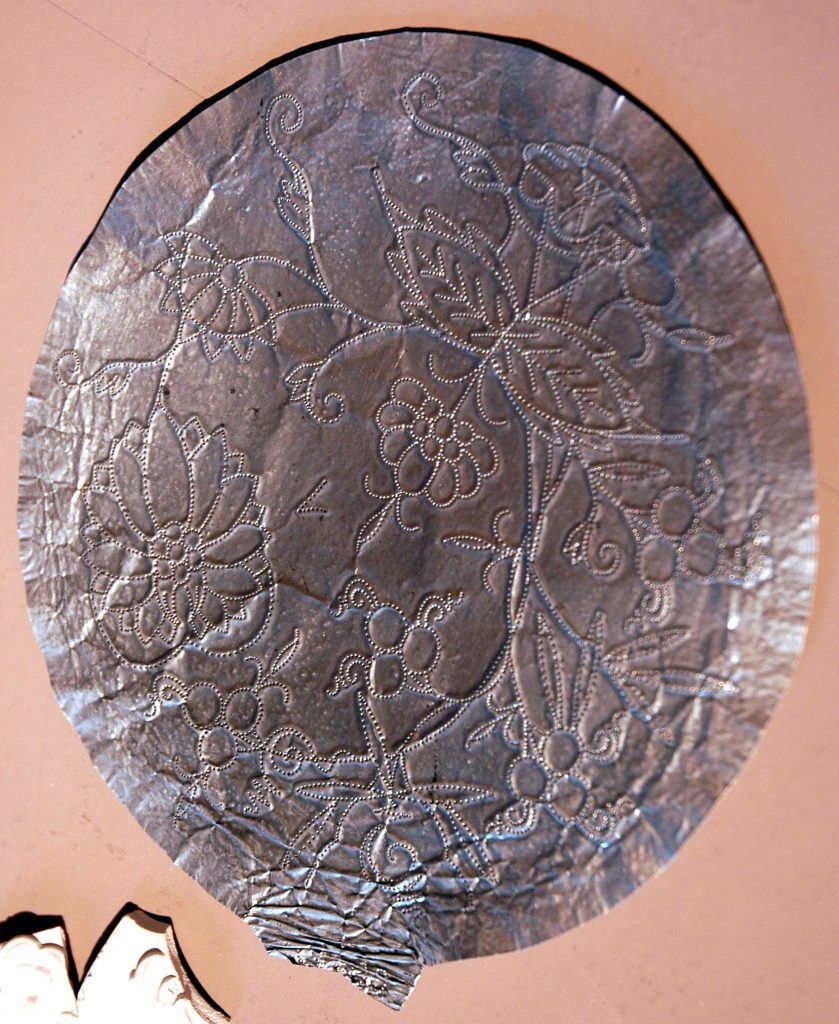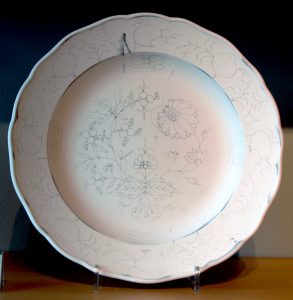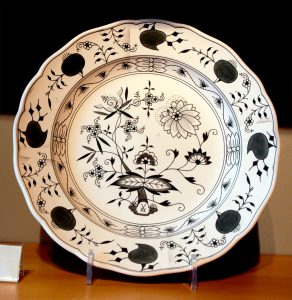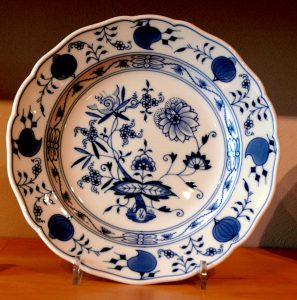
Sponse aus fester Alufolie, Meissen, Porzellanmanufaktur, 2008
Andreas Heege 2019
In order to create identical decorations or patterns, faience and porcelain manufacturers in Europe used templates, sheets of paper, oiled paper, metal or parchment, on which the pattern was sketched and the outlines pricked with a fine needle.
The template was then placed on the surface of the vessel and dusted with a fine charcoal powder (known as pounce), which provided the outlines for the painter to follow, once the template had been removed, thus ensuring consistency in the pattern (on the technique see e.g. Gauvin/Becker 2007, 12-13, 36).




Decoration created by pouncing, Meissen, onion pattern, 2008.
Translation Sandy Haemmerle
German: Sponse
French: poncif, poncis, chablon perforé
References:
Bastian 2003
Jacques Bastian, Strasbourg, faïences et porcelaines : 1721-1784, Strasbourg 2003, 99-105, 121-128
Gauvin/Becker 2007
Henri Gauvin/Jean-Jacques Becker, Cent ans de faïences populaires peintes à Sarreguemines et à Digoin, Sarreguemines 2007.
Blondel 2001
Nicole Blondel, Céramique, vocabulaire technique, Paris 2014, 304
Frz.: poncif, poncis, chablon perforé
Anglais : Punched pattern (pierced image transfer paper), pouncing (Pounce – loose graphite or charcoal – is rubbed through a series of small holes punched in a paper pattern to transfer the design to an item to be decorated).

